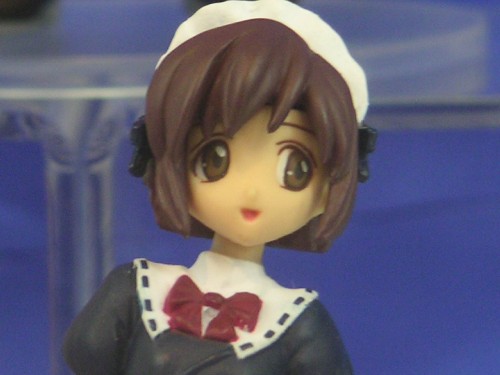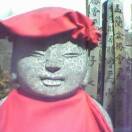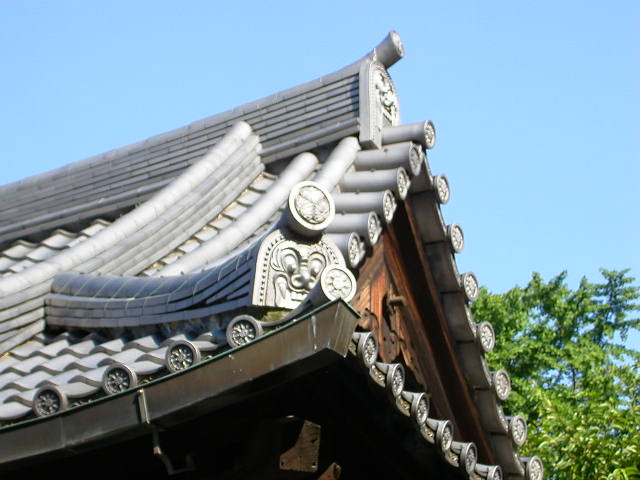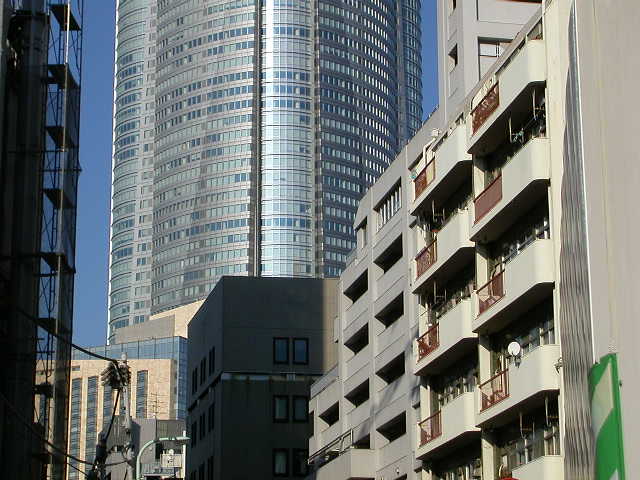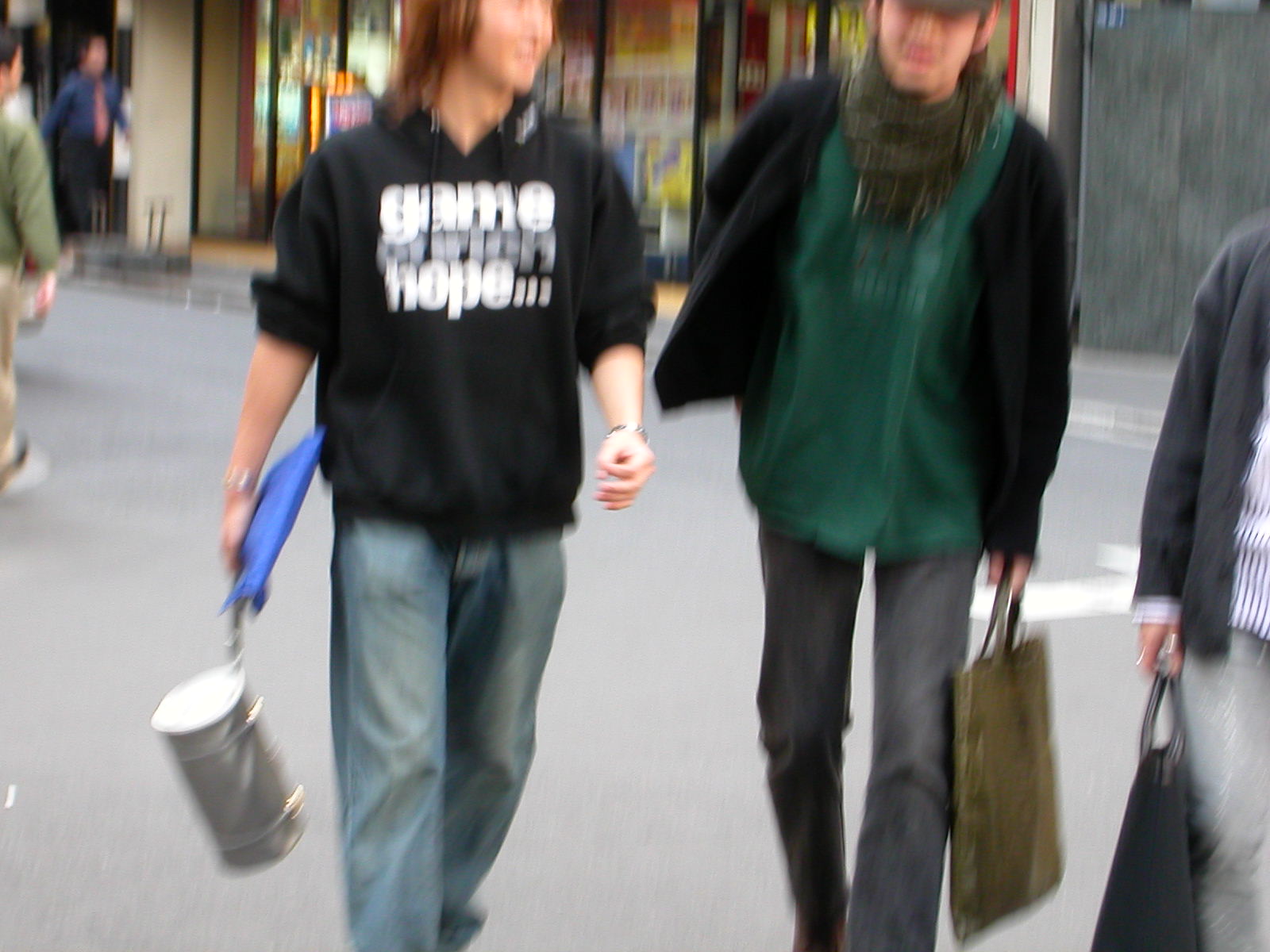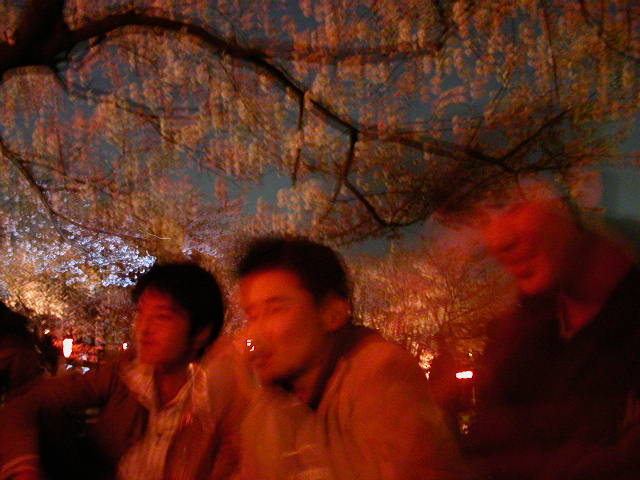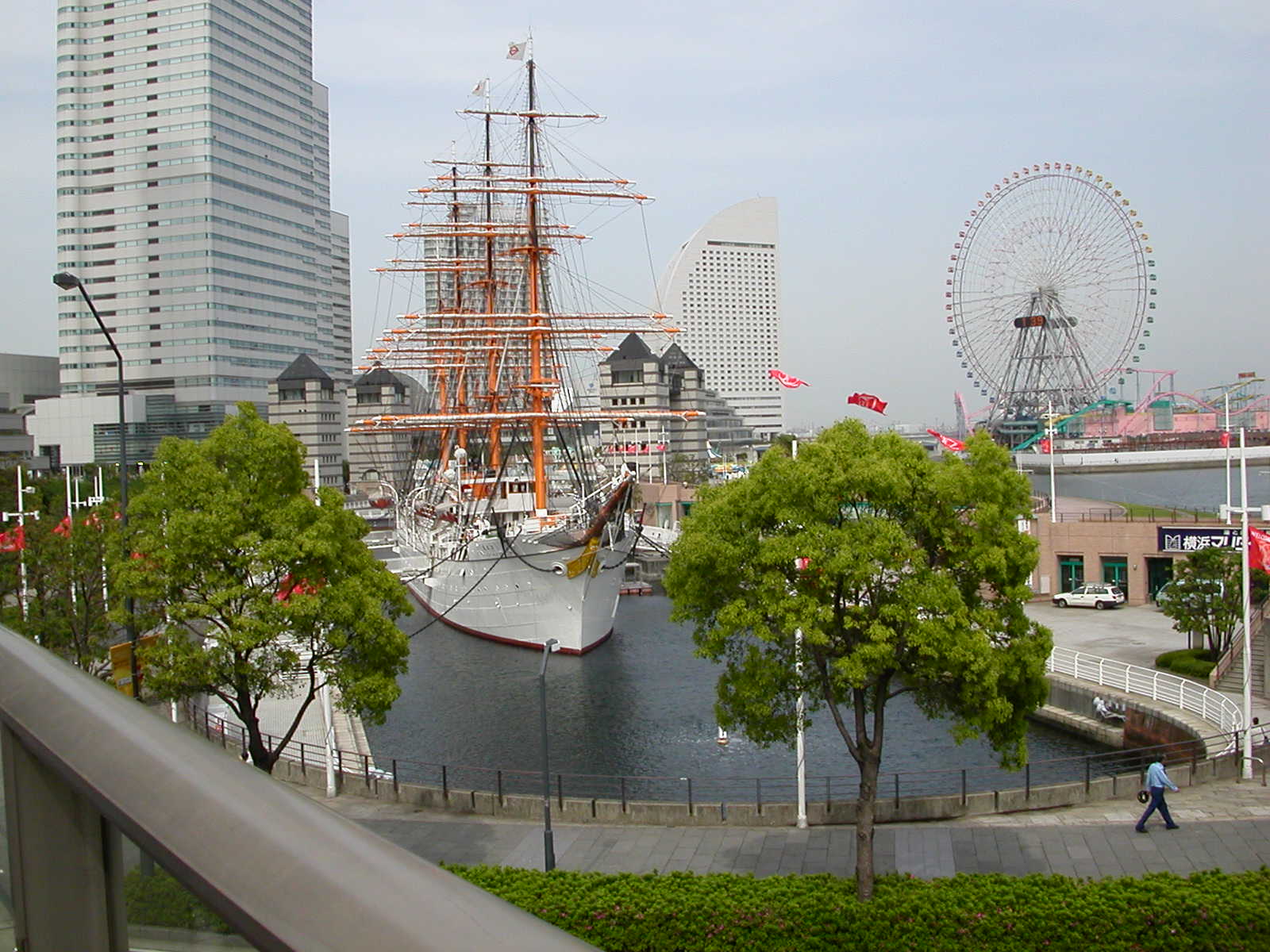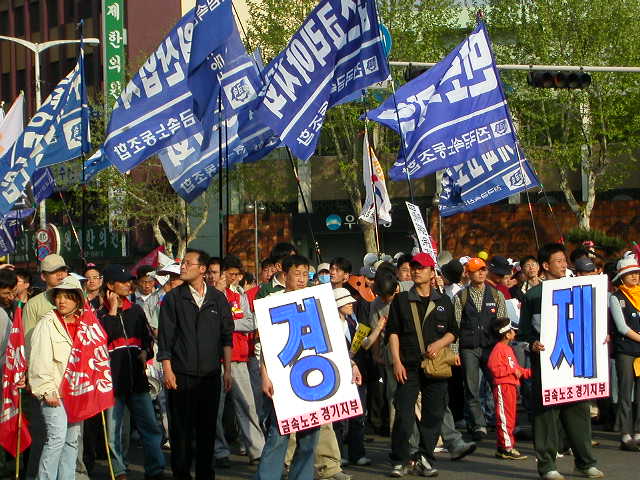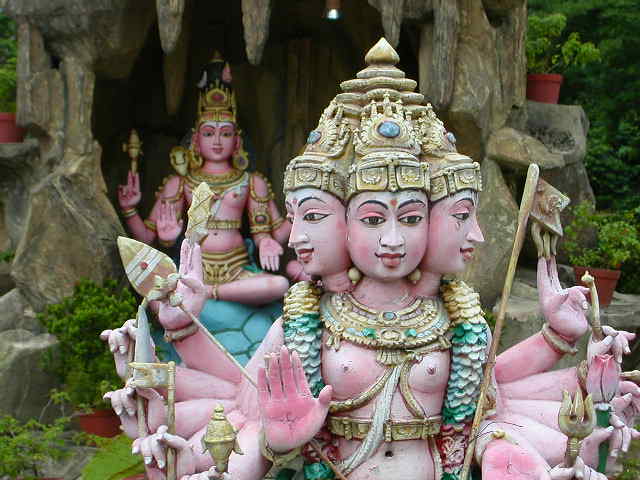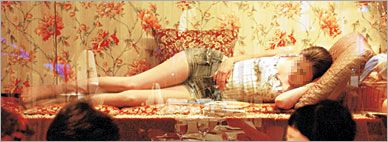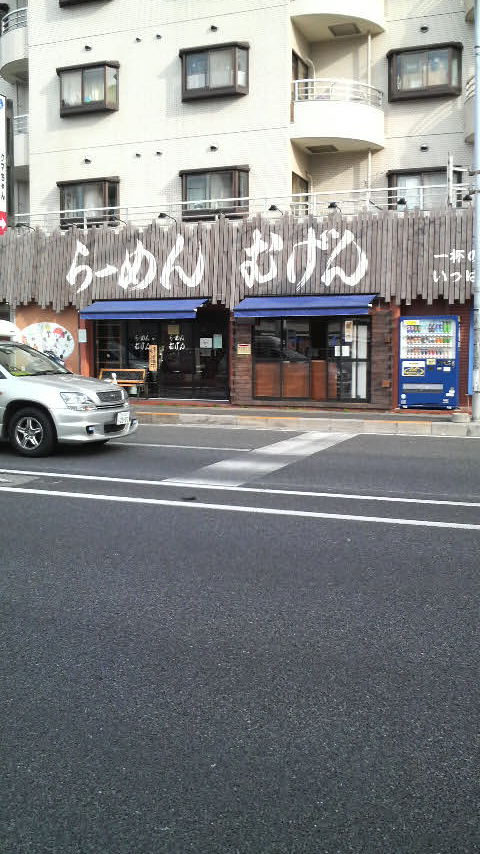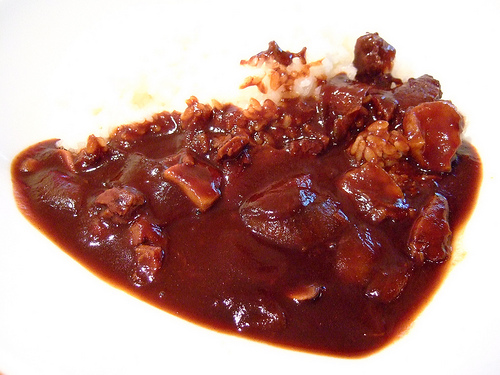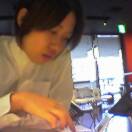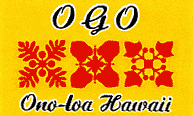| |||||||||||||||||
This means "Black Ships" in English, and the restaurant chain takes its name from the famous (or infamous) Black Ships which Commodore Perry sailed into Yokohama in the 19th Century, demanding that Japan open itself to world trade. What connection can be drawn between Commodore Perry and Chinese style ramen noodles remains to be seen -- but this seems to a popular place to dine and relax. The Kiyosumi-Shirakawa resturaunt is located right opposite the south end of Kiyosumi Garden, on Kiyosumi-Dori. Look for all the bright primary colored flag/signs fluttering on the street outside.
TVチャンピオンちゃぶ屋プロデュースの店。フランチャイズが増えている 醤油麺600/味噌麺650/つけ麺750 等.
 九州筑豊らーめん 山小屋: 江東区白河1-6-1. TEL: 03-5646-5377.
九州筑豊らーめん 山小屋: 江東区白河1-6-1. TEL: 03-5646-5377.
九州を中心とするチェーンの東京進出一号店。しっかりとした豚骨スープ。
TO THE BIRD PARK: Go past Hanaya Yohei restaurant and cross road. Pass ramen shop and go straight past park to red road.
Ikebukuro, Ogikubo and Ebisu are three areas in Tokyo known for their ramen, according to Wikipedia. I never actually dined in Ogikubo in the year or so I spent working there, but I remembered the many ramen shops set up all alongside Blue Plum Road. Tomato ramen seemed to be a speciality here, which might please some North Americans hungering for this legendary concoction (read Ramenlicious's post on whatever happened to tomato ramen in the States). Of course, when Americans talk about ramen what they usually mean is "instant ramen", and the tomato sauce that Ramenlicious is mourning the demise of is actually a powder. Or it was, since it is gone now. In Ogikubo in the stylish western suburbs of Tokyo, however, tomato ramen is a big hit. If they only dunked a huge quantity of cheese into the mix, I would be a convert. My Ogikubo days are over, unfortunately, and I am heading to Vietnam by way of Australia.
Ramen Tei: Asakusa.
Only 290 yen for good ramen. I went there myself with Kenichi Anazawa.
This restaurant is full of cheerful atomosphere (sic) and is popular among the native young people (they mean young Japanese, not American Indians!) One week is spent for making the deminglace sauce of this restaurant!"
On her website Eve wrote: "We arrived at Asakusa station and so our first stop was the Kaminari Mon, or `Thunder Gate` which leads to the Nakamise market and Sensoji temple. Our guide suggested we take a boat along the Sumida River to Hamarikyu gardens, and so our course was set. On the way, however, I noticed, down an alley, a little cafe called Arizona Kitchen, which I happened to know was one of the haunts of Nagai Kafu. I mentioned this and our guide suggested we have lunch there. On the menu was a strange dish of chicken liver, which, it said, Nagai Kafu used to eat when he came here. SiI only felt a minor sense of regret in ordering this. I suppose it`s silly, but it made me feel a little closer to one of my personal literary deities. On the wall of the cafe were extracts from Kafu`s diary. "January the 24th. Clear skies. Cloudy later. Dinner at Arizona Kitchen." That sort of thing."
Mochi Mochi Noki Ramen Shop: Shin-Okubo.
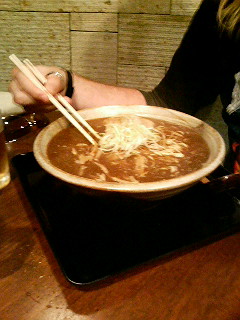
Ichinoe, in Tokyo's Edogawa Ward, was where I was introduced to ramen, and ate some of my finest bowls, courtesy of my boss and later sponsor, Hiroshi Kobayashi. Kobayashi's school (Kidea English Academy) was in the early 00s set on the fourth floor or thereabouts of an apartment block on Kan Nana Dori (Number Seven Ring Road); auspiciously there was a ramen restaurant on the ground floor. Drinking Asahi Super Dry out of little glass pitchers, and munching on kim'chi. If you wanted to spice the soup up a little (or a lot!), drop some of that kim'chi into the bowl. It's your party.
Minowa<:
As I wrote to myself back in 2006: There is a Mac and a ramen shop near Minowa station. If you are game, you can always dine with the homeless folk who can be found all over the place. After my short spell in jail in 2007, I began to feel an affinity with those homeless folk.
He "was a Japanese novelist, playwright, essayist, and diarist. His works are noted for their depictions of life in early 20th-century Tokyo, especially among geisha, prostitutes, cabaret dancers, and other denizens of the city's lively entertainment districts."
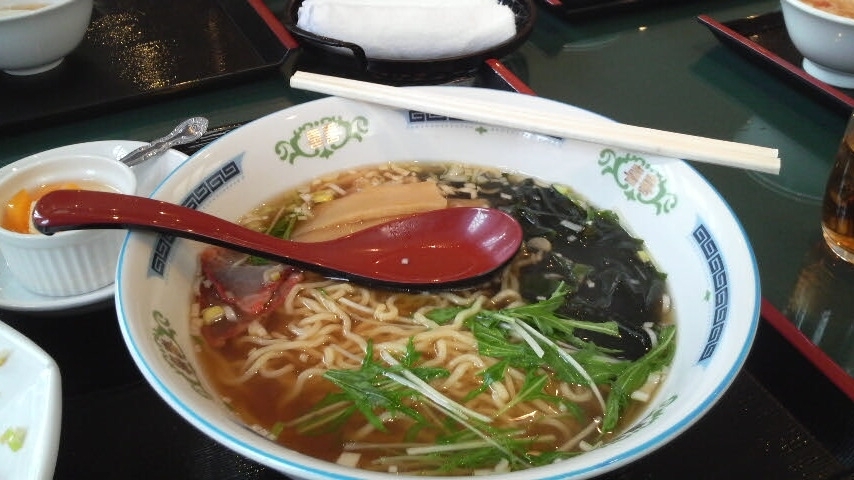
"Ironically, the old Yoshiwara district burned down (along with much of the city) in the Meireki fire of 1657; it was rebuilt in the new location, when it was renamed Shin Yoshiwara (New Yoshiwara), the old location being called Moto Yoshiwara (Original Yoshiwara); eventually the "Shin" was dropped, and the new district became known simply as the Yoshiwara.
"The Yoshiwara was home to some 1,750 women in the 1700s, with records of some 3,000 women from all over Japan at one time. The area had over 9,000 women, many of whom suffered from syphilis, in 1893. These women were often sold to the brothels by their parents at the age of about seven to twelve. If the young girl was lucky, she would become an apprentice to a high ranking courtesan. When the girl was old enough and had completed her training, she would become a courtesan herself and work her way up the ranks. The girls often had a contract to the brothel for only about five to ten years, but massive debt often kept them in the brothels their entire life. There were very few ways for a young lady to get out of the brothel due to all of her debt.
"Social classes were not strictly divided in Yoshiwara. A commoner with enough money would be served as an equal to a samurai. Though it was discouraged for a samurai to enter the Yoshiwara area, they often did so anyway. The only requirement on them was that all their weapons had to be left at the town's entrance gate. Also by law, the patrons of the brothels were only allowed to stay for a night and a day at a time.
"Yoshiwara also became a strong commercial area. The fashions in the town changed frequently, creating a great demand for merchants and artisans. Traditionally the prostitutes were supposed to wear only simple blue robes, but this was rarely enforced. The high-ranking ladies often dressed in the highest fashion of the time, with bright colorful silk kimonos and expensive and elaborate hair decorations. Fashion was so important in Yoshiwara that it frequently dictated the fashion trends for the rest of Japan."
You would never guess from the dreary and drab state of Yoshiwara today, that it was once the fashion heart of Japan. It only goes to illustrate, how things change over time...
Arizona Kitchen: 1-34-2 Asakusa, Taito Ward. Phone: 03/3843 4932.
ASAKUSA RESTAURANTS AND CAFES
ef gallery | gaboh | heijouen grilled meat
|
||||||
